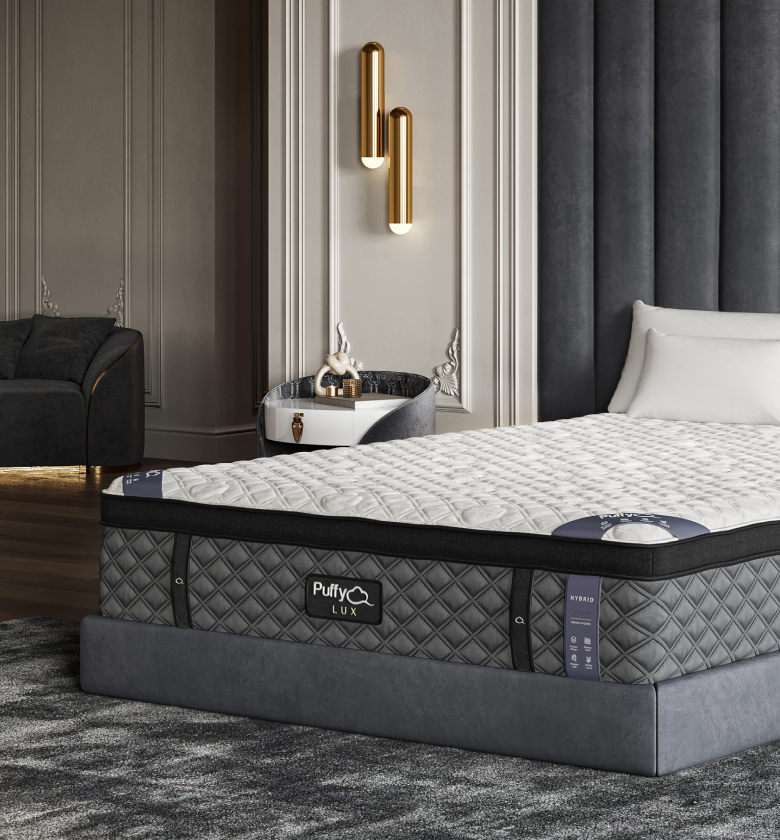The growing awareness around the impact of household items on health has brought the significance of non-toxic mattresses to the forefront. A non-toxic mattress is not just about comfort and support; it’s about ensuring your sleep environment is free from harmful chemicals.
In this comprehensive guide, we’ll explore what makes a mattress non-toxic, the symptoms of a toxic mattress, and how to choose the best non-toxic mattress for your needs.
Toxic Mattress Symptoms
Understanding the potential health hazards associated with toxic mattresses is critical.
Identifying Symptoms:
- Respiratory Issues: Difficulty breathing, asthma, or allergies can be aggravated by off-gassing chemicals.
- Skin Irritations: Rashes, itching, or other skin problems may be signs of chemical sensitivity.
- Headaches and Nausea: Exposure to certain chemicals in mattresses can cause neurological symptoms.
Non-Toxic Mattress: What Does It Mean?
A non-toxic mattress is designed to be free from harmful chemicals and materials.
Defining Non-Toxic Mattresses:
- Chemical-Free Materials: Avoidance of volatile organic compounds (VOCs), formaldehyde, and flame retardants.
- Natural and Organic Materials: Utilization of organic cotton, natural latex, and wool.
- Certifications: Look for certifications like GOTS (Global Organic Textile Standard) and OEKO-TEX.
Mattresses from Puffy, for instance, prioritize the use of safe, non-toxic materials, aligning with the growing consumer demand for health-conscious bedding options.
Best Non-Toxic Mattress
Finding the best non-toxic mattress involves considering various factors and preferences.
Criteria for Selection:
- Material Quality: Organic and natural materials are preferred for their minimal chemical treatments.
- Comfort and Support: Ensure the mattress meets your comfort needs while being non-toxic.
- Brand Reputation: Choose brands known for their commitment to non-toxic products.
Top Picks for Non-Toxic Mattresses:
- Organic Latex Mattress: Known for its natural, chemical-free composition.
- Certified Organic Innerspring Mattress: Combines traditional support with organic materials.
- Eco-Friendly Memory Foam Mattress: Look for memory foam mattresses that are CertiPUR-US certified, ensuring low VOC emissions.
Non-Toxic Mattress Certification: What to Look For
Certifications are a reliable way to verify the non-toxic nature of a mattress.
Key Certifications:
- GOTS (Global Organic Textile Standard): Ensures organic status of textiles.
- GREENGUARD Gold: Indicates low chemical emissions.
- CertiPUR-US: Certifies foam is made without certain harmful chemicals.
Puffy mattresses use CertiPUR-US certified foams, ensuring they are free from harmful chemicals while providing the comfort and support needed for a good night's sleep.
How to Transition to a Non-Toxic Mattress
Switching to a non-toxic mattress is a significant step towards a healthier sleep environment.
Transition Tips:
- Research: Invest time in understanding the different non-toxic materials and certifications.
- Test for Comfort: Ensure the new mattress meets your comfort preferences.
- Proper Disposal: Responsibly dispose of your old mattress, considering recycling or donation options.
Non-Toxic Mattress Care and Maintenance
Proper care can extend the lifespan of your non-toxic mattress and maintain its health benefits.
Care Guidelines:
- Regular Cleaning: Use natural cleaning solutions to maintain hygiene.
- Proper Ventilation: Air out the mattress regularly to prevent moisture buildup.
- Use Protective Covers: Opt for organic or natural mattress protectors.
The Impact of Non-Toxic Mattresses on Sleep Quality
The benefits of a non-toxic mattress go beyond health; they also impact sleep quality.
Sleep Quality Improvements:
- Reduced Allergen Exposure: Ideal for allergy sufferers.
- Improved Respiratory Health: Fewer chemicals mean better air quality while sleeping.
- Peace of Mind: Knowing you’re sleeping on a safe, chemical-free mattress can enhance sleep quality.
Comparing Non-Toxic Mattresses with Traditional Mattresses
Understanding the differences between non-toxic and traditional mattresses can help in making an informed decision.
Comparative Analysis:
- Material Composition: Traditional mattresses often contain synthetic materials and chemicals.
- Health Implications: Non-toxic mattresses eliminate the risk of exposure to harmful chemicals.
- Lifespan and Sustainability: Non-toxic mattresses often boast greater durability and eco-friendliness.
Cost Considerations for Non-Toxic Mattresses
While non-toxic mattresses can be more expensive, their long-term benefits justify the investment.
Price Analysis:
- Initial Cost vs. Long-Term Health: The upfront cost can be higher, but the health and environmental benefits offer long-term savings.
- Quality and Durability: Non-toxic mattresses often use higher quality materials that last longer.
Conclusion: Embracing Healthier Sleep with Non-Toxic Mattresses
Choosing a non-toxic mattress is a significant step towards ensuring a healthy, safe, and comfortable sleep environment. By understanding the symptoms of toxic mattresses, the importance of non-toxic materials, and the various options available, you can make an informed decision that aligns with your health and comfort needs.
As brands like Puffy demonstrate, the move towards non-toxic mattresses reflects a broader shift towards wellness and sustainability in sleep products, highlighting the importance of quality sleep in overall health and well-being.

- Award-Winning Comfort
- Lifetime Warranty
- 101-Night Sleep Trial
- Free Shipping in 1 - 2 Days
- Assembled in USA












